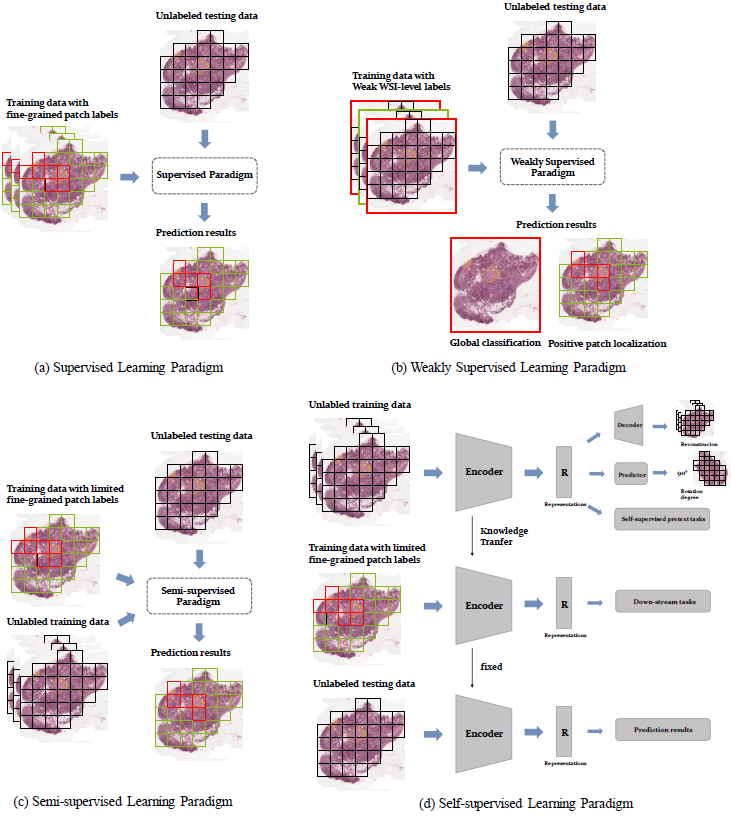

Towards Label-efficient Automatic Diagnosis and Analysis: A Comprehensive Survey of Advanced Deep Learning-based Weakly-supervised, Semi-supervised and Self-supervised Techniques in Histopathological Image Analysis
Linhao Qu, Siyu Liu, Xiaoyu Liu, Manning Wang†, Zhijian Song†
Physics in Medicine and Biology (IF=4.174)
Abstract
Histopathological images contain abundant phenotypic information and pathological patterns, which are the gold standards for disease diagnosis and essential for the prediction of patient prognosis and treatment outcome. In recent years, computer-automated analysis techniques for histopathological images have been urgently required in clinical practice, and deep learning methods represented by convolutional neural networks have gradually become the mainstream in the field of digital pathology. However, obtaining large numbers of fine-grained annotated data in this field is a very expensive and difficult task, which hinders the further development of traditional supervised algorithms based on large numbers of annotated data. More recent studies have started to liberate from the traditional supervised paradigm, and the most representative ones are the studies on weakly supervised learning paradigm based on weak annotation, semi-supervised learning paradigm based on limited annotation, and self-supervised learning paradigm based on pathological image representation learning. These new methods have led a new wave of automatic pathological image diagnosis and analysis targeted at annotation efficiency. With a survey of over 130 papers, we present a comprehensive and systematic review of the latest studies on weakly supervised learning, semi-supervised learning, and self-supervised learning in the field of computational pathology from both technical and methodological perspectives. Finally, we present the key challenges and future trends for these techniques.
